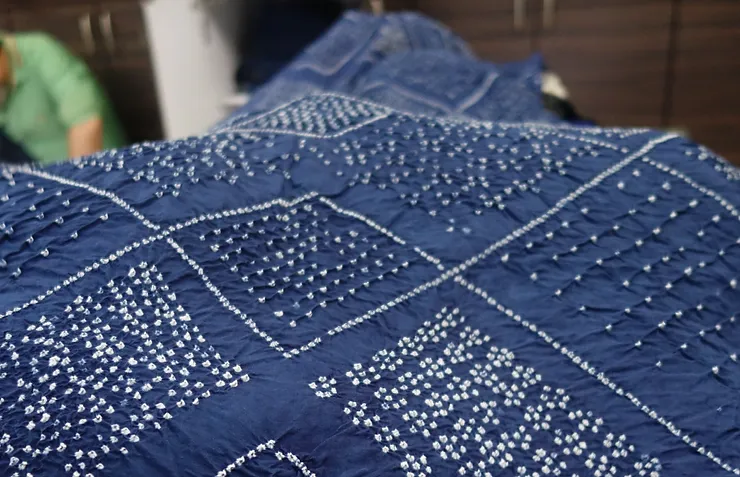denim indigo dye
The Allure of Denim Understanding Indigo Dye
Denim, the fabric synonymous with casual style and durability, has a rich history that dates back centuries. At the heart of its appeal is indigo dye, a deep blue pigment that not only colors the fabric but also weaves a story of cultural significance, craftsmanship, and innovation. This article explores the fascinating world of indigo dye in denim production, its historical roots, and its impact on fashion and sustainability today.
The Origins of Indigo Dye
Indigo dye has a storied past, with its use traced back to ancient civilizations in various parts of the world. The indigo plant, particularly Indigofera tinctoria, has been cultivated for thousands of years for its dye. Cultures across India, Africa, and South America have relied on this vibrant blue hue for textiles, often using it in traditional clothing. The method of extraction is labor-intensive leaves are harvested, fermented, and processed to yield the dye, which is then applied to fabrics.
Denim itself originated in the French city of Nîmes in the late 17th century, where sturdy cotton twill fabric was produced and dyed with indigo. The term “denim” derives from “serge de Nîmes.” The fabric gained popularity as workwear for laborers and miners due to its toughness, which made it particularly desirable for practical use.
The Indigo Dyeing Process
The indigo dyeing process encapsulates a blend of art and science. The deep blue that characterizes denim is achieved through a technique known as “rope dyeing.” In this process, yarn is twisted into rope-like strand and dipped multiple times into the indigo dye bath. Each dip allows for the dye to build up gradually, resulting in a rich shade of blue. The unique aspect of indigo dye is that it doesn’t bond with cotton fiber in a conventional manner. Instead, it forms a layer on the surface, which allows for fading and variations in color as the fabric is worn, giving denim its distinctive look.
As denim is washed and worn over time, the indigo dye fades, creating a personalized patina that many fashion enthusiasts crave. This fading process has led to the popularity of “raw” denim, which is unwashed and untreated, allowing for a unique color evolution based on individual wear.
denim indigo dye

Cultural Significance and Modern Fashion
The cultural significance of indigo dye is still apparent today. Various regions have their unique approaches to dyeing, leading to a variety of looks and styles. For instance, Japanese indigo dyeing methods have garnered worldwide acclaim for their craftsmanship, often resulting in intricate and beautiful patterns such as shibori.
In contemporary fashion, denim has transcended its original workwear roots and has become a staple in wardrobes around the globe. The versatility of denim allows it to be dressed up or down, making it a favorite for designers. Collections featuring denim now often highlight indigo-dyed garments, embracing both the historical tradition and modern trends.
Sustainability Challenges and Innovations
However, the fashion industry faces increasing scrutiny regarding sustainability, and denim manufacturing is no exception. The indigo dyeing process can be notoriously water-intensive and environmentally damaging. Many brands are now seeking sustainable alternatives, such as organic indigo and innovative dyeing techniques that reduce water consumption and chemical use.
Moreover, there is a growing movement encouraging consumers to cherish longevity in denim, promoting the concept of fewer, high-quality purchases rather than fast fashion. By valuing well-made, indigo-dyed denim jackets or jeans, consumers can reduce waste and foster a sustainable relationship with their wardrobe.
Conclusion
The journey of denim and indigo dye is a reflection of how culture, craftsmanship, and innovation can blend to create something beautiful and timeless. From its ancient roots to its contemporary status within the fashion world, indigo dye remains an integral part of denim’s identity. As the industry moves towards sustainability and ethical practices, the allure of indigo offers a powerful reminder of fashion’s potential for storytelling and transformation. Embracing this heritage not only enhances individual style but also connects us to a larger narrative of history and cultural appreciation.
-
The Timeless Art of Denim Indigo Dye
NewsJul.01,2025
-
The Rise of Sulfur Dyed Denim
NewsJul.01,2025
-
The Rich Revival of the Best Indigo Dye
NewsJul.01,2025
-
The Enduring Strength of Sulphur Black
NewsJul.01,2025
-
The Ancient Art of Chinese Indigo Dye
NewsJul.01,2025
-
Industry Power of Indigo
NewsJul.01,2025
-
Black Sulfur is Leading the Next Wave
NewsJul.01,2025

Sulphur Black
1.Name: sulphur black; Sulfur Black; Sulphur Black 1;
2.Structure formula:
3.Molecule formula: C6H4N2O5
4.CAS No.: 1326-82-5
5.HS code: 32041911
6.Product specification:Appearance:black phosphorus flakes; black liquid

Bromo Indigo; Vat Bromo-Indigo; C.I.Vat Blue 5
1.Name: Bromo indigo; Vat bromo-indigo; C.I.Vat blue 5;
2.Structure formula:
3.Molecule formula: C16H6Br4N2O2
4.CAS No.: 2475-31-2
5.HS code: 3204151000 6.Major usage and instruction: Be mainly used to dye cotton fabrics.

Indigo Blue Vat Blue
1.Name: indigo blue,vat blue 1,
2.Structure formula:
3.Molecule formula: C16H10N2O2
4.. CAS No.: 482-89-3
5.Molecule weight: 262.62
6.HS code: 3204151000
7.Major usage and instruction: Be mainly used to dye cotton fabrics.

